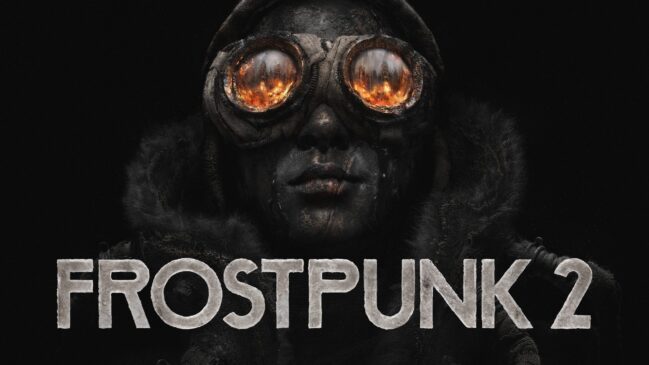
Wuchang: Fallen Feathers is a game that wears its sorrow like a second skin. From its very first steps into a broken, plague-ridden world, it makes clear that this is not a journey meant to empower or uplift. This is a descent. Set against the backdrop of a collapsing Ming dynasty, the game invites players into a vision of ancient China where history and myth bleed together in ways that are as haunting as they are beautiful. Developed by Leenzee Games, you play not as a chosen hero, but as a wandering soul marked by disease and silence, fighting not just to survive, but to understand what exactly the world has become.
AT A GLANCE
Title: Wuchang: Fallen Feathers
Developer: Leenzee Games
Publisher: 505 Games
Genre: Action RPG / Soulslike
Platform(s): Xbox Series X|S, PlayStation 5, PC
Release Date: July 24, 2025
There is elegance in the way Wuchang balances horror with reverence, violence with stillness. It is not a perfect game. It struggles with consistency, especially when it comes to pacing and polish. But when it works, it casts a spell. Whether that spell holds depends on your willingness to lean into the quiet, the cryptic, and the corrupted nature of the world it is set in.
Story
At its core, Wuchang: Fallen Feathers is a story of rot of a decaying dynasty, a withering world, and a protagonist whose very body is being consumed by the same supernatural blight she is trying to defeat. Set during the twilight of the Ming dynasty, the narrative pulls inspiration from real-world historical collapse and folds it into a surreal, almost folkloric horror tale. You play as Wuchang, a warrior afflicted with the “feathering disease,” a curse that slowly transforms humans into feathered abominations. As Wuchang, you must navigate a fractured China plagued by death, despair, and monsters that were once human.
The plot is deliberately fragmented, in the tradition of FromSoftware’s storytelling style, but lacks the refinement and layered complexity of its influences. In games like Bloodborne or Dark Souls, environmental storytelling, item descriptions, and obscure NPC dialogue combine to form a tapestry that rewards obsessive attention and lore-hunting. Wuchang emulates this approach but often stumbles. The pieces are there shrines desecrated by winged monstrosities, ancient scrolls filled with cryptic verses, townspeople driven mad by plague but the glue that holds it all together is thin. Narrative beats often feel disconnected, and characters lack the haunting ambiguity or emotional depth that define genre standouts.
What Wuchang does get right is atmosphere. Its world is drenched in a sense of sorrow and disintegration. The setting shifts from fog-choked villages to blood-soaked battlegrounds and rain-slicked monasteries, each with their own fragments of the overarching mystery. The visual storytelling is often more effective than the written one. A shrine covered in feathers and claw marks tells a more compelling story than the cryptic dialogue of the monk kneeling beside it. And yet, for all its thematic potential, the game never quite capitalizes on the unique setting or premise. The fall of the Ming dynasty, a period rife with political betrayal and supernatural superstition, is a brilliant backdrop but the game only scratches the surface.

The player character, Wuchang, remains frustratingly one-dimensional throughout most of the experience. Unlike Sekiro’s Wolf, whose personal stakes and relationships evolve as the story progresses, Wuchang is a cipher. Her affliction is interesting, but her motivations and emotions remain distant. There are hints at inner conflict and the cost of wielding her powers, but they rarely rise to the surface. The moral and philosophical themes corruption, decay, identity are present but underexplored. The player is left to infer more than they should have to, and unlike FromSoftware’s worldbuilding, which feels deliberate in its obscurity, Wuchang’s feels more like a missed opportunity.
To its credit, the game does offer some fascinating ideas, particularly around transformation. The feathering disease is more than just a visual motif it becomes a mechanical and thematic symbol of duality. The world is filled with characters clinging to the last scraps of their humanity, mirroring Wuchang’s own struggle. This central theme is strong, but the storytelling framework doesn’t give it the weight or narrative payoff it deserves.
In comparison to other genre heavyweights, Wuchang feels narratively thin. Nioh and Nioh 2, despite their over-the-top action and fantastical elements, weave a clear narrative thread rooted in Japanese history and myth, with memorable characters and satisfying arcs. Sekiro offers a deeply personal story of loyalty and loss, told with restraint but clear emotional stakes. Bloodborne excels in Lovecraftian mystery, dripping in dread and existential horror. Wuchang, by contrast, has the bones of a great mythological tragedy but doesn’t flesh it out enough to leave a lasting mark.
This is not to say Wuchang fails completely in its storytelling. There are moments usually visual or environmental that are genuinely affecting. A crumbling library overtaken by bird-like corpses. A child singing in an abandoned street while black feathers rain from the sky. These moments hint at a richer story buried underneath the surface. But the game too often relies on genre conventions and vague mysticism, hoping the player will fill in the blanks.
Ultimately, the story of Wuchang: Fallen Feathers is ambitious but underdeveloped. It aims for the haunting poetry of a FromSoftware epic but doesn’t quite achieve the coherence or emotional punch needed to stand alongside its peers. What it lacks in narrative structure and character depth, it partially makes up for in mood and aesthetic. But for a game that seeks to carry the torch of a beloved genre, atmosphere alone is not enough.
Gameplay
Wuchang: Fallen Feathers plays like a student of the soulslike genre. It closely follows the established formula of slow, deliberate combat, punishing enemies, and tight resource management, while trying to layer on a few original ideas of its own. At a glance, the gameplay loop will feel familiar to fans of Dark Souls, Sekiro, or Nioh. You enter a hostile zone filled with corrupted enemies, navigate through a series of checkpoints, collect experience in the form of essence, and risk losing it all with every death.
The combat system is the heart of the game, and it is both functional and flawed. Wuchang wields a variety of weapons that draw from Chinese martial traditions. These range from heavy blades and spears to curved sabers and ritual daggers, each with distinct combos, special attacks, and timing windows. There is a noticeable fluidity to the animation work, especially when chaining light and heavy attacks or weaving in dodge steps. The combat feels weighty and responsive, but it lacks the surgical precision of its influences. Hitboxes can be inconsistent, enemy tracking feels exaggerated, and input buffering occasionally sabotages critical encounters.

Parrying plays a significant role, with a timing system that rewards aggressive counters. It is clearly inspired by Sekiro’s posture-based combat, but does not reach the same level of tightness. Unlike Sekiro, where parrying becomes an elegant rhythm game, Wuchang’s version feels more binary—either it works or it doesn’t, and often for reasons outside the player’s control. The feedback is satisfying when it lands, but unreliable mechanics can turn boss fights into frustrating tests of patience rather than skill.
One of the game’s few unique features is the Feather Affliction system. As Wuchang takes damage or uses specific abilities, she accrues corruption that eventually unlocks powerful feather-based transformations. These include summoning spectral wings for ranged attacks, unleashing area-of-effect slashes, or temporarily mutating into a monstrous form. The concept is genuinely interesting. It adds a risk-reward layer that forces players to decide whether to embrace their affliction for power or manage it to preserve humanity. However, the system is underutilized. There is little narrative weight to the transformation, and mechanically, it becomes just another cooldown to manage rather than a strategic decision with consequences.
Boss design is a high point, at least aesthetically. These grotesque, birdlike horrors are visually distinct and unsettling. Their attack patterns vary in speed and aggression, with some requiring fast reflexes and others demanding endurance and stamina conservation. However, many fights boil down to simple pattern recognition, and once you’ve identified the exploit, the tension fades. The bosses lack the multilayered phases or lore-driven symbolism seen in titles like Bloodborne or Elden Ring. A giant, mutated monk wielding a bone club may look terrifying, but once he starts repeating the same three moves, the illusion breaks.
The world itself is interconnected and dense, filled with hidden side paths, optional mini-bosses, and secrets to discover. Exploration is rewarded with new weapons, armor sets, consumables, and lore fragments. Still, the world design suffers from a lack of verticality and environmental puzzles. Most areas are flat, linear spaces dressed in visual complexity but mechanically straightforward. There is rarely a sense of spatial mastery or meaningful traversal, unlike the vertical brilliance of Sekiro’s Ashina Castle or the spiraling design of Dark Souls’ Undead Burg.
Enemy variety is a persistent weakness. Too many zones recycle the same infected soldiers, plague-ridden villagers, or feathered brutes with minor changes in size or color. It becomes repetitive fast. Companion NPCs are forgettable, and their questlines rarely go beyond fetch-and-return tasks or static dialogue trees. There are no dramatic revelations, betrayals, or shifts in power—just faint echoes of what better games have done before.

Progression is conventional. You gather essence, level up core stats, unlock passive bonuses, and upgrade weapons at blacksmiths scattered across the world. There are limited skill trees tied to weapon types and feather abilities, but customization feels shallow. There are not enough transformative builds or radically different playstyles to support multiple runs. What you start with is more or less what you stick with.
Visuals, Audio and Technical Performance
From the moment I stepped into the world of Wuchang: Fallen Feathers, it was clear the art team had built something visually arresting. The first thing that struck me was the way the fog rolled through the abandoned villages, diffusing the light in a way that made every ruined corridor and temple courtyard feel haunted. There is a deliberate richness to the world, one that respects its historical roots while pushing deep into the realm of the surreal. Ancient Chinese architecture, forgotten shrines, and decaying towns are rendered with incredible attention to detail. You can see the effort in the weathered wood of a monastery door or in the cracked tiles of a plague-stricken estate. The visual storytelling is as confident as it is expressive, and it rarely feels like the environments exist just for set dressing. They breathe, they mourn, and they decay right in front of you.
Lighting plays a huge role in shaping the atmosphere. Torches cast long shadows across narrow alleyways, moonlight glints off rusted blades, and fireflies hover near toxic marshes. There were moments where I paused just to take in the eerie beauty of it all. Even during boss encounters, where the action becomes chaotic and screen space fills with particle effects, the game’s visual identity remains coherent and grounded. However, not everything is perfect. On closer inspection, some textures in the background appear muddy and can take a few seconds to load in, especially after fast travel. These minor hiccups didn’t pull me out of the experience, but they were reminders that the game sometimes pushes the hardware a bit more than it can handle cleanly.
The audio design in Wuchang is equally compelling. I played the game with a headset, and the use of spatial audio added a layer of immersion that I didn’t expect. Distant screams echoed across hillsides. The wind whispered through forests. Wooden beams groaned above me as I crept through a collapsing shrine. It is an oppressive world, but the soundscape never lets you forget that. The combat effects are crisp and impactful. Swords clanged, feathers sliced the air, and spells detonated with satisfying weight. The music complements the visuals beautifully. Traditional Chinese instruments like the erhu and guqin are used sparingly but effectively, often layered beneath ambient tones or swelling orchestral pieces during boss fights. The soundtrack does not overwhelm. Instead, it supports the emotion of each area with careful restraint. There were moments when the music fell silent altogether, letting the atmosphere speak for itself, and those were among the most chilling moments of all.

Voice work is solid throughout. I played the game in Mandarin with subtitles, which added to the authenticity of the setting. The performances are subtle, sometimes subdued, but rarely feel out of place. Wuchang herself speaks very little, and while that fits the tone of the game, I occasionally found myself wishing she had more to say. The supporting characters do their part in setting the mood, even if the dialogue can lean heavily on cryptic exposition.
On the technical side, the experience varied depending on the platform. On PlayStation 5, which is where I spent most of my time, the game ran smoothly. I opted for performance mode and was rewarded with a mostly steady 60 frames per second. Load times were short, transitions between areas were seamless, and I only encountered a few minor bugs. These included occasional animation stutters and one instance of the lock-on targeting system getting stuck on a corpse, which required a manual reset to fix. Nothing that broke the game, but worth noting.
Wuchang: Fallen Feathers excels in its presentation. The visuals are rich with identity and cultural weight. The sound design elevates the mood without ever overwhelming the player. The technical performance on consoles holds steady, giving the world the space it needs to unfold without interruption. For a game this stylistically ambitious, it delivers far more often than it stumbles. Even in its less polished moments, I found myself drawn back in by the sheer atmosphere of it all. The world of Wuchang may be falling apart, but from a sensory perspective, it is absolutely captivating.
Final Thoughts
Summary
Wuchang: Fallen Feathers leaves a lasting impression through atmosphere and tone rather than spectacle. Its world is steeped in decay and myth, inviting players into a slow, haunting journey through a land undone by disease and forgotten gods. While the combat is solid, it lacks the refinement of genre leaders. Some systems feel underdeveloped, and technical issues can break immersion. Yet, despite these flaws, the game's artistic vision, cultural identity, and audio-visual design create a compelling experience. Wuchang is not a game for those seeking fast-paced action or clear-cut storytelling. It asks for patience and rewards those who engage with its quiet intensity. The silence speaks, the world mourns, and beneath it all is a story about loss, identity, and the cost of transformation. Wuchang: Fallen Feathers does not revolutionize the genre, but it adds something a rare voice that is both unfamiliar and worth listening to.






